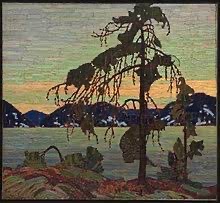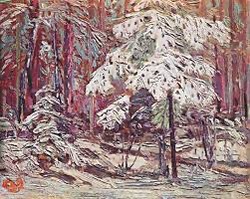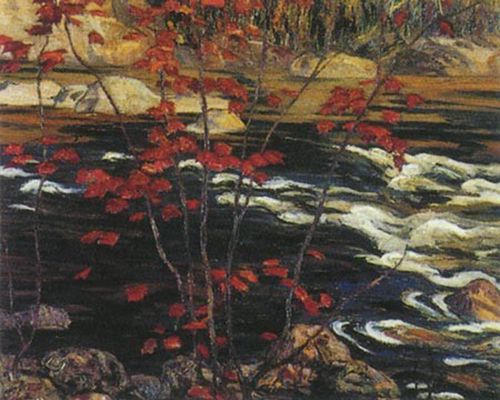The Group of Seven emerged in 1920.


In the early 20th century Canada was still trying to find its cultural footing after gaining autonomy. One of the biggest influences in establishing Canada’s artistic perspective was from artists like the Group of Seven. The original members included Franklin Carmichael, Lawren Harris, A.Y. Jackson, Franz Johnston, Arthur Lismer, J.E.H. MacDonald, and F.H. Varley. The Group of Seven was also known as the Algonquin School because they considered themselves a school of modern landscape painters. The group was founded in 1920 and disbanded in 1933 but within that time made mesmerizing works encapsulating Canada’s rich serene views with a surreal impressionist flare.
The Eighth Member of the Group of Seven



The Group was heavily influenced by the work of fellow Canadian artist, Tom Thompson and has credited him on inspiring their style. Thompson would have inevitably been a member of the group but unfortunately, he drowned in 1917, three years before the schools’ fruition. Some of his famous paintings included “The Jackson Pine” ca. 1916, “The West Wind” ca. 1917, and my personal favourite; “Snow in the Woods” ca. 1916 all done in oils.
Another artist heavily associated with the Group of Seven was Emily Carr. She also shared their unique organic style and has a similar subject matter to the group.
Capturing Canada’s Essence
At the time Canada’s rugged wilderness was had to depict and a but dreary also typically non-classical art styles weren’t very palatable to society at the time and mundane landscapes weren’t particularly interesting. However, these ideals didn’t stop the Group of Seven from going against the grain and embracing their vibrant impressionist style. The paintings from the Group of Seven much like Tom Thompson are categorized as impressionist landscapes and easily identified by their broad brush strokes, vibrant and chaotic use of colour, and lack of traditional technique. Their works were different from other artists at the time as well due to their bold use of line, contour, and texture. This was heavily inspired by Scandanavian art, and the group used that style of work as inspiration after group members, MacDonald and Harris grew an interest in it in 1913.



Some famous paintings of the group include “Red Maple” ca. 1914 by A.Y Jackson, “North Shore, Lake Superior” ca. 1926 by Lawren Harris, “The Nickel Belt” ca. 1928 by Franklin Carmichael. The group captured a unique essence to Canada’s wilderness since most of the paintings they did were from life and they would often go on group painting excursions together, and would often refer to themselves as “adventurers in paint”. I thought this was pretty wholesome. This is also why you can find similar muses for the group’s paintings and scenes from the same place, just from different perspectives.
In May of 1920, the first show by the Group of Seven was held in the Canadian National Gallery in Ontario and the group was heavily endorsed and supported by the gallery’s director, Eric Brown. Overall the show had mixed reviews but was overall unsuccessful after having a turnout of roughly 2000 people and only selling 5 paintings.
Sources
“Canadian Landscape Painters from 1920 to 1933.” The Group of Seven, 12 Apr. 2020, https://thegroupofseven.ca/.
“Group of Seven (Artists).” Wikipedia, Wikimedia Foundation, 30 Nov. 2021, https://en.wikipedia.org/wiki/Group_of_Seven_(artists).
“The Group of Seven – Concepts & Styles.” The Art Story, https://www.theartstory.org/movement/group-of-seven/history-and-concepts/.
“The Group of Seven – Important Paintings.” The Art Story, https://www.theartstory.org/movement/group-of-seven/artworks/.
“Group of Seven.” The Canadian Encyclopedia, https://www.thecanadianencyclopedia.ca/en/article/group-of-seven.
Leave a Reply